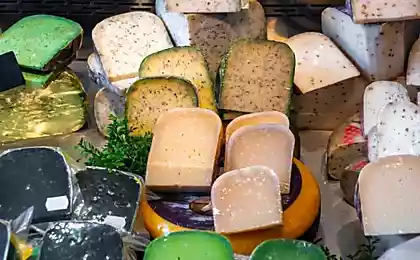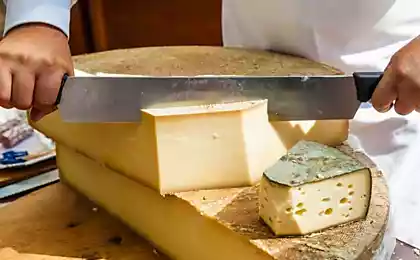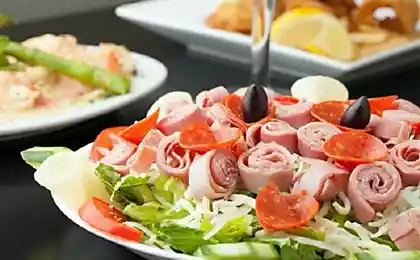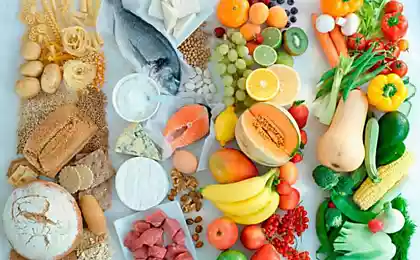201
How to make the right cheese plate
Making a cheese plate is not just cutting and laying out cheese, but a whole science with its own rules and laws. You can collect the best cheeses from all over the world, but your cheese plate will not make any impression on guests if you do not follow the basic rules of its composition.

Right now, the editorial board. "Site" He will tell you about all the details of making and serving a cheese plate.
A classic cheese plate should include 3 to 7 types of cheese. In the variant with seven species must be present. cheesefresh cheese from goat or cow’s milk, soft-cheeseaged goat cheese, semi-soft and blue cheese, as well as cheese with an additional flavor, such as cheese with greens and cumin.

Typically, cheese is served on a round wooden board, although many also use a rectangular-shaped board or even a tray.

Along with the cheese, additional components must be present on the plate. Most often used nuts, honey and sweet and sour berries. For a cheese plate, almonds, walnuts and hazelnuts are perfect. Honey can be replaced with sour and sweet jam made of currants or quince. And if you want to decorate a plate with fruits, cut an apple, pear or fig with thin slices.

There will also be a variety of dried fruits.

Some variations of cheese plates include various meat delicacies. Decoration in such a composition can be grape leaves and familiar greens, such as parsley or green onions, as well as olives.

As for the number of additional components, there should be no more than five in one composition, otherwise the cheese plate risks turning into an awkward set of different dishes.

It is also important to remember to cut the cheese properly. Cut slices can only be hard varieties, the rest of the cheese should be cut in triangles, so that in each piece there is a crust, core and edge. Guests can taste a particular type of cheese.
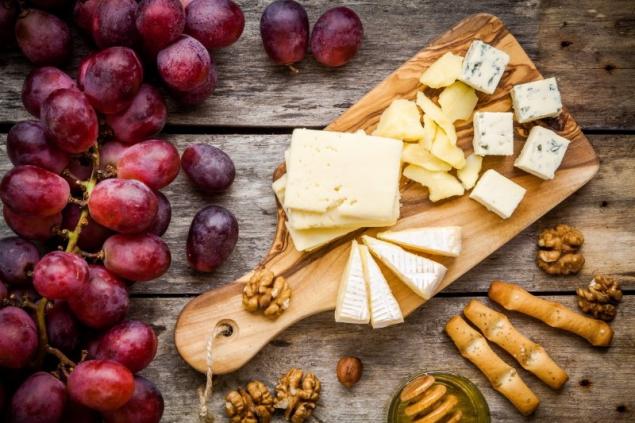
The placement of cheese on a plate is probably the most important thing. Connoisseurs recommend spreading cheese, starting with soft varieties and ending with sharp views. So, the most delicate and sharp cheese should be near.

At the same time, hard cheeses should be placed on the edge, and wet ones should be placed in the center. Be sure to leave small gaps between cheeses on the plate so that their smells do not mix.

Hopefully, these tips will help you make your unrivaled cheese plate and really surprise guests!

Right now, the editorial board. "Site" He will tell you about all the details of making and serving a cheese plate.
A classic cheese plate should include 3 to 7 types of cheese. In the variant with seven species must be present. cheesefresh cheese from goat or cow’s milk, soft-cheeseaged goat cheese, semi-soft and blue cheese, as well as cheese with an additional flavor, such as cheese with greens and cumin.

Typically, cheese is served on a round wooden board, although many also use a rectangular-shaped board or even a tray.

Along with the cheese, additional components must be present on the plate. Most often used nuts, honey and sweet and sour berries. For a cheese plate, almonds, walnuts and hazelnuts are perfect. Honey can be replaced with sour and sweet jam made of currants or quince. And if you want to decorate a plate with fruits, cut an apple, pear or fig with thin slices.

There will also be a variety of dried fruits.

Some variations of cheese plates include various meat delicacies. Decoration in such a composition can be grape leaves and familiar greens, such as parsley or green onions, as well as olives.

As for the number of additional components, there should be no more than five in one composition, otherwise the cheese plate risks turning into an awkward set of different dishes.

It is also important to remember to cut the cheese properly. Cut slices can only be hard varieties, the rest of the cheese should be cut in triangles, so that in each piece there is a crust, core and edge. Guests can taste a particular type of cheese.

The placement of cheese on a plate is probably the most important thing. Connoisseurs recommend spreading cheese, starting with soft varieties and ending with sharp views. So, the most delicate and sharp cheese should be near.

At the same time, hard cheeses should be placed on the edge, and wet ones should be placed in the center. Be sure to leave small gaps between cheeses on the plate so that their smells do not mix.

Hopefully, these tips will help you make your unrivaled cheese plate and really surprise guests!

